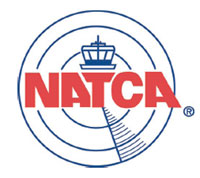Says Supervisory Functions Should Not Be Carried Out While On
Duty
In a letter to FAA Administrator Randy Babbitt, NTSB Chair
Debora Hersman recommending that the FAA take action to improve the
safety of air traffic control (ATC) operations by prohibiting air
traffic controllers from providing supervisory oversight while
performing operational air traffic duties. Hersman says NTSB
investigations of several events have found ATC staffing scenarios
in which the supervisory function was being performed by a
controller who was also performing operational duties. In many
instances, a sufficient number of personnel were on duty at the
time of the events such that another qualified controller could
have been designated to supervise; however, ATC management’s
decisions concerning staffing utilization resulted in a lack of
distinct supervisory oversight, thus diminishing or eliminating the
effectiveness of the supervisory role.

NTSB Chair Hersman
Hersman cites examples such as the August, 2009 incident in
which a sightseeing helicopter collided with a GA aircraft over the
Hudson river, fatally injuring nine people. The airplane had
departed Teterboro Airport (TEB) and was receiving radar traffic
advisories from the TEB local controller prior to a handoff to
Newark Liberty International Airport (EWR). TEB tower staffing at
the time of the midair collision included a developmental
controller working the flight data and clearance delivery positions
and a local controller working the ground control/arrival radar
positions while also acting as controller-in-charge (CIC). Two
other controllers, one was qualified as CIC, and a front line
manager/supervisor were on break and not in the tower cab. The
result of the front line manager’s staffing decision to be on
break at the same time as another CIC-qualified controller was that
other sources of supervision were potentially available but not
utilized.
About 3 minutes before the accident, the TEB local controller
initiated a nonpertinent telephone call to airport operations while
continuing to provide instructions to the airplane pilot, including
a delayed instruction to switch to the EWR tower frequency that the
pilot read back incorrectly and the controller did not correct. The
NTSB determined that the probable cause of this accident was, in
part, the Teterboro Airport local controller’s nonpertinent
telephone conversation, which distracted him from his air traffic
control duties, including correcting the airplane pilot’s
read back of the EWR tower frequency and the timely transfer of
communications for the accident airplane to the EWR tower. Several
other examples are listed in the letter to Babbitt.

Hersman says in the letter that "FAA Order 7210.3, "Facility
Operation and Administration,” Section 6, paragraph 2-6-1,
“Watch Supervision” states, in part, that “watch
supervision requires maintaining situational awareness…of
traffic activity and operational conditions in order to provide
timely assistance to specialists and…ensure[s] available
resources are deployed for optimal efficiency. Watch supervision
may be performed by a manager, supervisor, or
controller-in-charge."
However, she writes, "despite the intent of Order 7210.3 to
provide adequate watch supervision and, in all but one of the
events discussed, the availability of sufficient and qualified
staff to act in a strictly supervisory role, management staffing
decisions resulted in these assets not being used; in the remaining
event, a controller was on duty alone during the midnight shift and
was therefore responsible for supervising himself. The particular
difficulty of supervising oneself is amply demonstrated in most of
the events discussed in that the controller committing the error
was also acting as CIC. The NTSB concludes that the watch
supervision directives in Order 7210.3 are incompatible with
effective oversight and that the effectiveness of the supervisory
role is reduced when it is performed in combination with
operational duties, leading to operational errors, incidents, and
accidents."

FAA Administrator Babbitt
Hersman concludes that the NTSB recommends that the FAA
"Prohibit air traffic controllers from providing supervisory
oversight while performing operational air traffic duties."
 ANN's Daily Aero-Linx (04.15.24)
ANN's Daily Aero-Linx (04.15.24) Classic Aero-TV: 'No Other Options' -- The Israeli Air Force's Danny Shapira
Classic Aero-TV: 'No Other Options' -- The Israeli Air Force's Danny Shapira Aero-News: Quote of the Day (04.15.24)
Aero-News: Quote of the Day (04.15.24) Airborne 04.16.24: RV Update, Affordable Flying Expo, Diamond Lil
Airborne 04.16.24: RV Update, Affordable Flying Expo, Diamond Lil ANN's Daily Aero-Term (04.16.24): Chart Supplement US
ANN's Daily Aero-Term (04.16.24): Chart Supplement US





